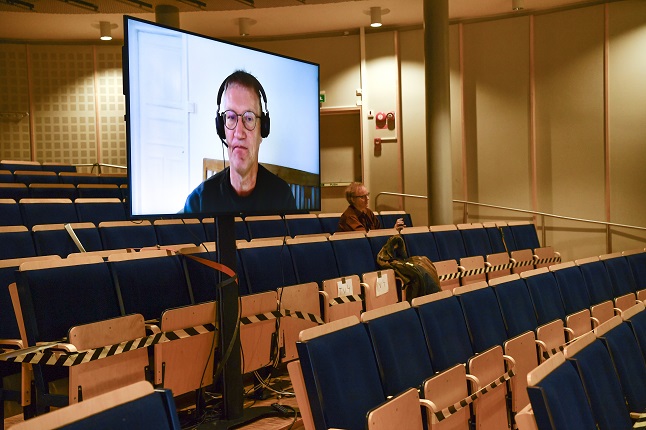At the press conference from Swedish authorities – held completely digitally for only the second time since the start of the pandemic – The Local asked if there was any updated information on how people with immigrant backgrounds have been affected by the coronavirus in Sweden.
A report published in June showed that people born outside Sweden were over-represented among people who were diagnosed with the virus, and who died from it.
“We are just compiling a report to see if there is the same level of over-representation of people born in other countries among the sick people this time,” said Anders Tegnell on Tuesday.
“The indications we have right now when we have asked the regions is that it's not at all as big a difference as it was in spring. There might still be a slight over-representation of some groups but not at all the same situation as we had during the spring.”
We also asked if the over-representation of foreign-born people in the first wave had been taken into account when adapting measures for the second wave of the virus.
The June report did not outline any possible explanation for these results, but regional councillors have suggested possible causes such as limited information available in other languages in the early stages of the pandemic, and foreign-born people typically being more likely to live in crowded accommodation or working in jobs requiring contact with others.
“It's a difficult area to reach them and it very much needs to be done on a regional level […] we are mainly giving the regions some background materials on how they can work with them, we are helping them with translation into different languages and so on, but the direct contact and communication with them is done in the Swedish context on the regional level, but I know most regions are really doing something. They're trying to make testing more accessible for these groups and to set up testing centres in areas with an over-representation of these groups and so on. There are things being done but you can always do more of course,” said Tegnell.
Also on Thursday, Tegnell was asked by UNT if the first wave of the virus in Sweden was halted primarily due to a change in the weather or due to people following guidelines. He said, “it's a combination of both, I believe”.
Radio Sweden asked about the impact of the stricter local recommendations which have now been rolled out to all but two of Sweden's regions – and one of the remaining two has introduced its own measures independently of the agency.
“It's a bit too early to say something about if the disease spread has changed or not. What we do know from local reports is that it has changed behaviour. We can see more people are working from home, people travel less in buses and trains, we can see that people shop less, but if this has also influenced the spread or not, it's still a bit early,” said Tegnell.
In response to a question from Reuters about whether the recommendations were still clear, Tegnell said: “It is very important to have a deep understanding of what applies in different situations. I can agree that parts [of the advice about] large events and how many people can gather, we need to look into that. There have been different messages. When it comes to local recommendations, we think it's a good idea that you get a clear link to your local situation.”


 Please whitelist us to continue reading.
Please whitelist us to continue reading.
Member comments